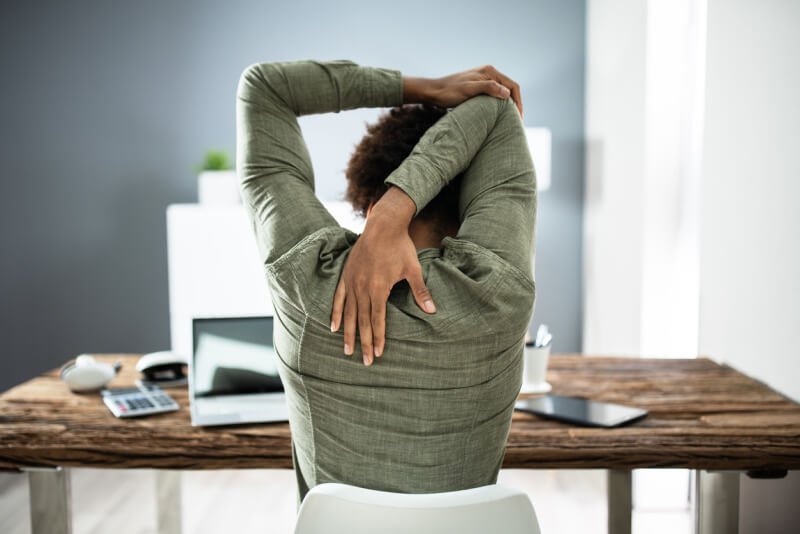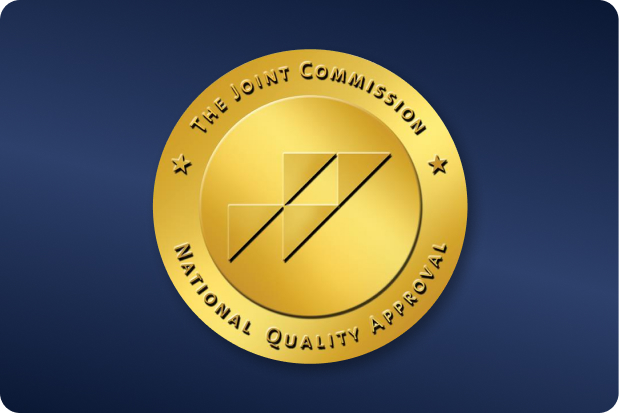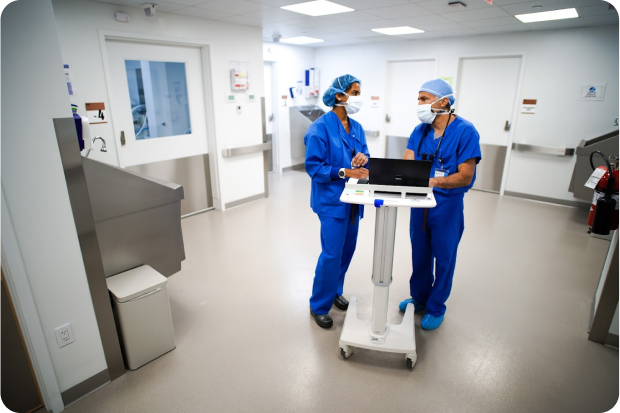 OUR LOCATIONSCall to book (212) 604-1300
OUR LOCATIONSCall to book (212) 604-1300
 OUR LOCATIONSCall to book (212) 604-1300
OUR LOCATIONSCall to book (212) 604-1300

Almost everyone has experienced back pain at some point in their lives so it’s not surprising that you too may be dealing with upper back pain regularly, specifically in between your shoulder blades. There are causes of upper body or upper back pain – poor posture, cervical spine problems, and injury are the most common ones. Having pain near or under your shoulder blade may limit arm movement and interfere with your daily activities. Depending on the cause of your pain, this could be solved by doing some stretches.
So what are the stretches for upper back pain in between shoulder blades should you do in order to ease the discomfort and get some relief? The pain can range from achy or tender across the upper back and shoulder, or burning and sharp pain between the spine and shoulder. If the left and right shoulder pain are muscular in nature, there are several ways to approach shoulder blade pain relief and there are stretching techniques that can give you both short-term and long-term pain relief for tight muscle and pain. If the pain is caused by something else and radiates to other parts such as the chest muscle, it’s important to identify it and let your doctor take care of it.
Pain in your upper back between your shoulder blades can be felt on one or both sides of your body. It can be chronic (pain that lasts for weeks or months) or acute (pain that lasts shorter than this period). Some of the symptoms you may experience include a short, sharp burst of pain (also referred to as muscle spasm), a burning ache, dull ache that lingers, pain when you take a deep breath, and pain that is centered in the area between your shoulder blades or spreads to your arms and/or other areas of your back.
Aside from your shoulder blades, the main areas that you may feel pain in are your neck, arms, and shoulders and will affect several muscles, including the rhomboids, upper trapezius, levator scapula, rotator cuff muscles, and scalenes.
There are so many factors that can contribute to the discomfort you’re feeling in this part of your upper back, but the most common ones include:

There are exercise and stretching techniques that you can practice to deal with the pain in your upper back and shoulder blades. There are techniques that will give you temporary relief via self-massage and stretching for areas that are actually painful. There are also stretches and muscle activation that will help promote better posture. This is more of a long-term strategy.
This technique requires you to use a massage ball since this is a self-massage. This relieves the trigger points that may have built up in and around your shoulder blades. Find a tender spot using the massage ball and then apply pressure in the exact spot where you feel pain. Lie on your back and place the massage ball in between your shoulder blades. Once you feel a tender spot, hold the massage ball in place and apply more pressure on it using your body weight. Hold that for at least 30 seconds without rolling the ball back and forth. Afterward, find another tender spot and repeat the process. You can also use a foam roller in place of the massage ball to apply firmer pressure on your tender spots.
With the help of a massage hook, you pinpoint the trigger points manually in your upper back and shoulder blades. While you’re standing, place the hook over your shoulder in the spot where your muscles are tight. Push your left arm a bit downwards to apply pressure in the area. Keep on the pressure until you feel the trigger point release – at least 30 seconds per spot should do it. Move the hook through the muscles surrounding your scapula and repeat the process. Do this to all the tender spots in this area.
This shoulder stretch is for the rhomboids and deltoids to release the tension in the area. Place your right elbow on your left elbow and then take your left hand and interlace it around your right arm. Apply more pressure if needed to open up or loosen up your upper back. Hold this position for 20-30 minutes and repeat on the other side.
This gentle stretch is useful for those with upper back posture since their trap muscles are often tight and the pain could go down to your shoulder blade area. Stretching this muscle is essential in order to fix your posture and lessen the pain. Sit in a chair and place your right hand over the left side of your head. Now gently pull your head towards your shoulder and hold this position for 20-30 seconds. Repeat the move on the other side.
The Levator Scapulae muscle runs from the neck to the shoulder blade and oftentimes the muscles get very tight, which results in neck pain in and pain around your shoulder blades. This exercise stretches and releases the muscles. Sit in a chair in an upright posture and place your right arm on the back of your head. Turn your head to the right and then bring your head down. Intensify the stretch if needed using your hand on top. Hold this position for 20-30 seconds and then switch sides.
Make good use of your doorway for a really nice stretch. This releases the tight chest muscles that may be causing your poor posture and in turn giving your shoulder blade pain. You have to stretch your pectoralis major and minor muscles to bring your back into proper posture. Place two arms on both sides of a door frame at a 90-degree angle. Step a leg forward through the door and apply pressure. Make sure not to stick your head forward or arch your lower back. Hold this stretch for 30 seconds. Repeat this three times.
With the help of resistance bands, this exercise will help strengthen the muscles between your shoulder blades. It will also make the muscles on the back of your shoulders stronger, which will help you maintain proper posture. Stand in an upright posture and hold a resistance band with both hands and then straighten your elbows and bring your arms out in front of you.
While your elbows are locked, move your arms out and back slowly behind your body. This will contract or squeeze the muscles between your shoulder blades. Feeling muscular discomfort is totally normal. Don’t shrug your shoulders toward your ears. Repeat this move in two sets of 10 and then gradually increase and add another set. This will get really challenging by the time you get to your eighth, ninth, and tenth repetition.
Remember to choose a resistance band that will allow you to do the move properly but give you enough resistance to be challenging.
This is for the rhomboid muscle and lower trapezius muscle, which help stabilize your shoulder blades and posture. Extend both your arms to form a “Y” and then pull your elbows down into your stomach area. This creates a “W”. Squeeze your shoulder blades together and down. Don’t forget to breathe while doing this exercise. Do two to three sets with 10 repetitions each.
Apart from stretches and exercises, there are other things you can do for pain relief.
If doing all of the above is not working and your pain still persists, you need to see your physical therapist to see what exactly is the cause of your discomfort. You may have arthritis and other pain issues that should be checked by a professional.
Is your upper back pain affecting your daily activities and your wellness in general? Let our top New York pain doctors help solve your pain issues. The facility is an expert on all sorts of pain from head to foot and offers top-notch physical therapy for these, from sports medicine to chiropractic care. If you’re in New York City and nearby areas, call New York Pain Care and work towards a pain-free life.
Learn more: Best Sleeping Position for Upper Back Pain Relief






